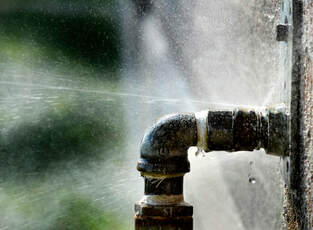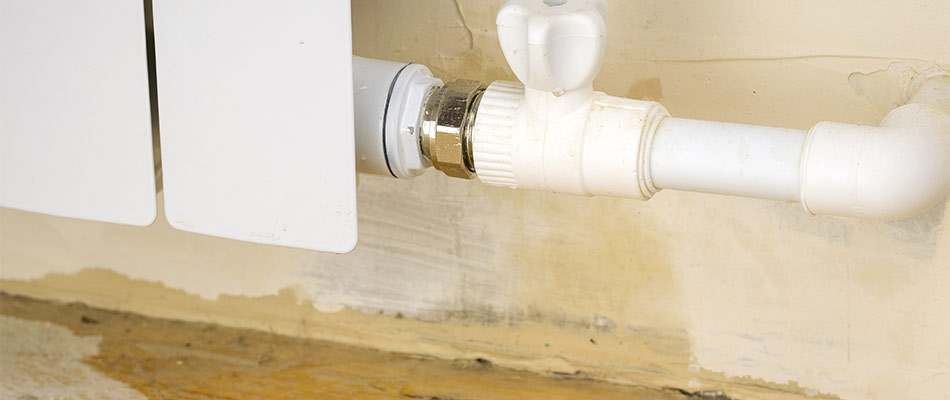Detecting Hidden Water Line Leaks: Six Effective Detection Methods
Detecting Hidden Water Line Leaks: Six Effective Detection Methods
Blog Article
Just how do you feel in regards to Finding hidden leaks?

Early detection of leaking water lines can alleviate a possible disaster. Some small water leaks might not be noticeable.
1. Check Out the Water Meter
Every house has a water meter. Checking it is a surefire way that assists you find leaks. For starters, turn off all the water sources. Ensure no one will flush, utilize the faucet, shower, run the washing machine or dishwasher. From there, most likely to the meter and also watch if it will change. Since no person is utilizing it, there ought to be no activities. That suggests a fast-moving leakage if it relocates. If you identify no modifications, wait an hour or two and check back again. This means you might have a slow-moving leak that might also be underground.
2. Examine Water Intake
Assess your water bills and track your water consumption. As the one paying it, you ought to discover if there are any type of inconsistencies. If you identify sudden changes, in spite of your usage being the same, it implies that you have leaks in your plumbing system. Bear in mind, your water expense need to fall under the exact same array each month. An abrupt spike in your bill suggests a fast-moving leakage.
At the same time, a constant boost on a monthly basis, despite having the same behaviors, reveals you have a slow leakage that's also slowly intensifying. Call a plumber to thoroughly check your property, especially if you feel a warm area on your floor with piping below.
3. Do a Food Coloring Examination
30% comes from commodes when it comes to water intake. Test to see if they are running appropriately. Drop specks of food shade in the tank as well as wait 10 mins. If the color in some way infiltrates your dish during that time without flushing, there's a leak in between the container and bowl.
4. Asses Outside Lines
Don't neglect to check your outside water lines also. Should water leak out of the link, you have a loose rubber gasket. One tiny leak can waste heaps of water and spike your water expense.
5. Examine and also Analyze the Situation
Property owners must make it a practice to examine under the sink counters as well as even inside closets for any bad odor or mold and mildew development. These two warnings show a leak so prompt interest is needed. Doing regular evaluations, even bi-annually, can save you from a major issue.
A lot more notably, if you recognize your residence is currently old, maintain a watchful eye on your heating units, hose pipes, pipes etc. Look for stainings and damaging as a lot of home appliances and pipes have a life expectancy. They will also normally wear away as a result of tear as well as use. Don't wait for it to escalate if you suspect dripping water lines in your plumbing system. Call an expert plumber right now so you do not wind up with a terrible mess in your house.
Early detection of leaking water lines can minimize a prospective catastrophe. Some tiny water leakages may not be visible. Examining it is a guaranteed means that assists you discover leakages. One tiny leakage can squander loads of water as well as increase your water costs.
If you suspect leaking water lines in your plumbing system, don't wait for it to intensify.
Tips for Detecting Hidden Plumbing Leaks
Check for Signs of Water Damage
We recommend that you check the following places for evidence of water damage:
Near where you store your water heater
Around your sump pump
In areas where pipes are visible
Underneath cabinetry or a vanity beneath a sink
Where your outside hose bib isIf water damage is present, you may also notice mold and/or mildew or smell a foul or musky odor. You might also be able to hear the sound of water running where it shouldn’t be.
Perform a Water Meter Test
One of the easiest ways to determine whether you have a hidden leak on your property is to test your water meter. Turn off all appliances in that use water and make sure you don’t have any faucets running. Locate your water meter and record the reading on it. Continue to leave everything off for a minimum of two hours and then go back and see the meter reading. If it’s a noticeable difference, chances are you have a hidden plumbing leak.
Monitor Your Outside Usage
As the seasons change, you might use more water to keep your yard lush and green and your flowers blooming. However, it’s important to routinely ensure that your sprinkler or irrigation system is working properly and that any outside faucets are completely off. This way you’re not wasting any water.
Do the Toilet Food Coloring Test
Are you kept up at night because your toilet continues to run? If you’ve noticed your toilet randomly refills, especially when it’s not in use, it could mean you have a defective flapper tank and water will leak into the bowl. Fortunately, there’s an easy (and kind of fun!) way to test whether you’re dealing with this issue. Grab some food coloring and add a few drops into your toilet’s tank. Wait 15 minutes and then check to see whether the water in the bowl is colored. If it is, you have a leak within your toilet and the internal assembly will need to be repaired or replaced.
https://www.carterservices.com/blog/2020/february/tips-for-detecting-hidden-plumbing-leaks/

Hopefully you liked our topic on Detecting hidden plumbing leaks. Thank you for spending some time to browse our piece of content. Do you know another individual who is in to the niche? Do not hesitate to share it. I love reading our article about Leaking water lines.
Problem solved, just call. Report this page